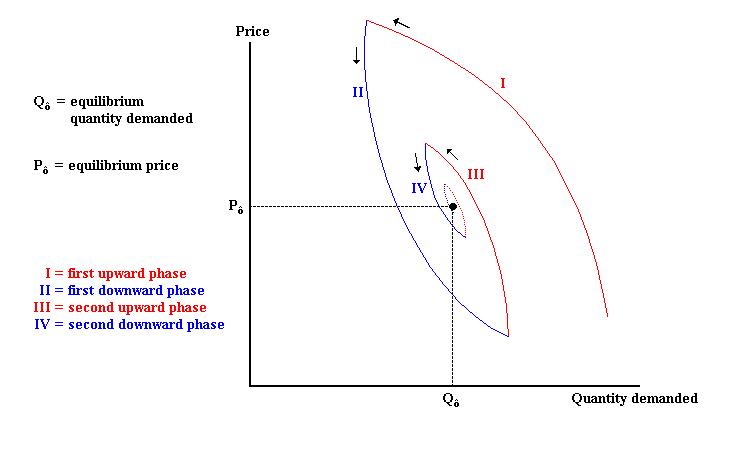

OWEISS DEMAND CURVE EXPLAINED. Above is Dr. Oweiss's demand
curve for oil which he devised to help explain why oil prices
must decline further. He explains: "The demand curve for
petroleum will change its elasticity over time resulting from
price increases or decreases. As oil prices rise slowly from PA
to PC, the demand curve is inelastic as it moves from point A
to point C. The quantity of oil is perhaps slightly reduced from
QA to QC but is generally unaffected. Consumers are unwilling
to change their consumption patterns due to only small increases
in oil prices and continue to buy petroleum products at the same
rate. In the second time series from point C to point E with substantial
increases in the price of oil (from PC to PE), the demand curve
becomes increasingly more elastic. The result is a tremendous
drop in the demand for oil at PE and the quantity demanded is
reduced to OE. Consumers cannot afford the higher oil prices and
accordingly change their oil consumption patterns. In the third
time period from point E to point G, oil prices fall moderately
from PE to PG. A small decrease in oil prices will not drastically
increase the quantity of oil demanded (from OE to OG) because
consumers will not suddenly alter their new substitution habits
and companies will not change their conservation technologies
and policies. If, however, in the fourth time frame, oil prices
are substantially reduced from PG to PI, then the quantity of
oil demanded will increase in due time from QG to QI. Consumers
will eventually resume their former consumption patterns as prices
move lower, but they will never totally surrender their substitution
tendencies."